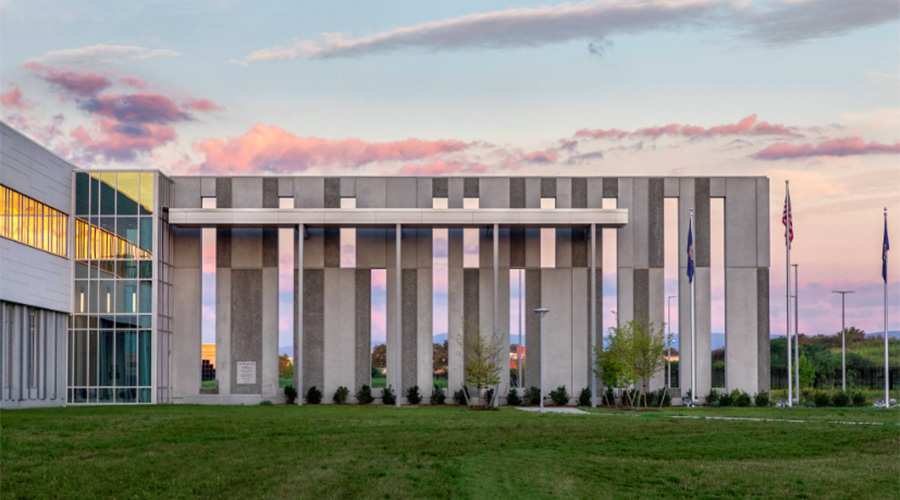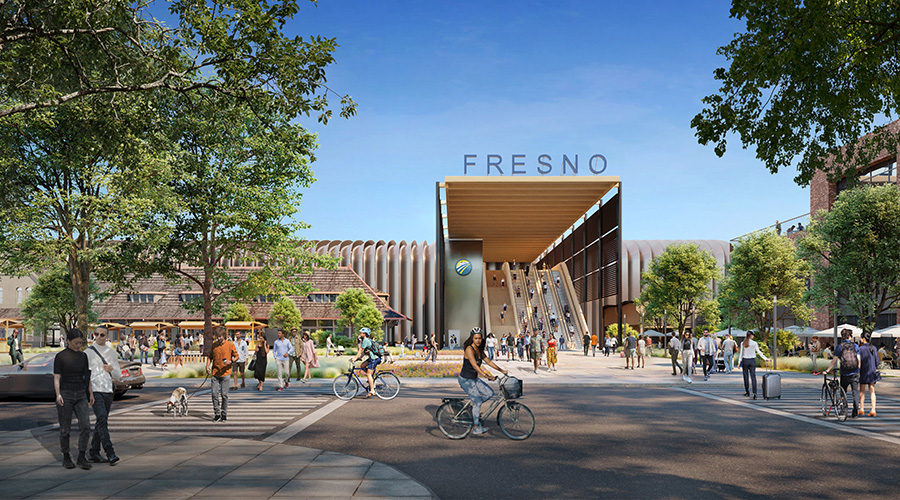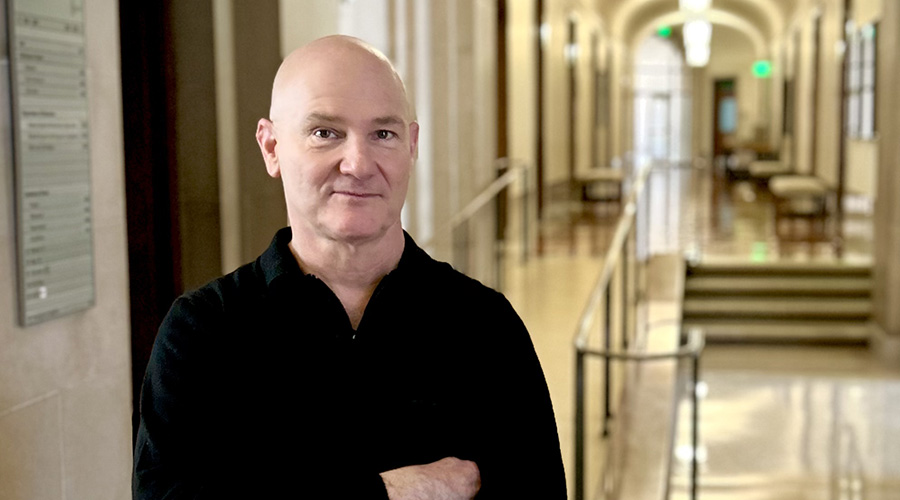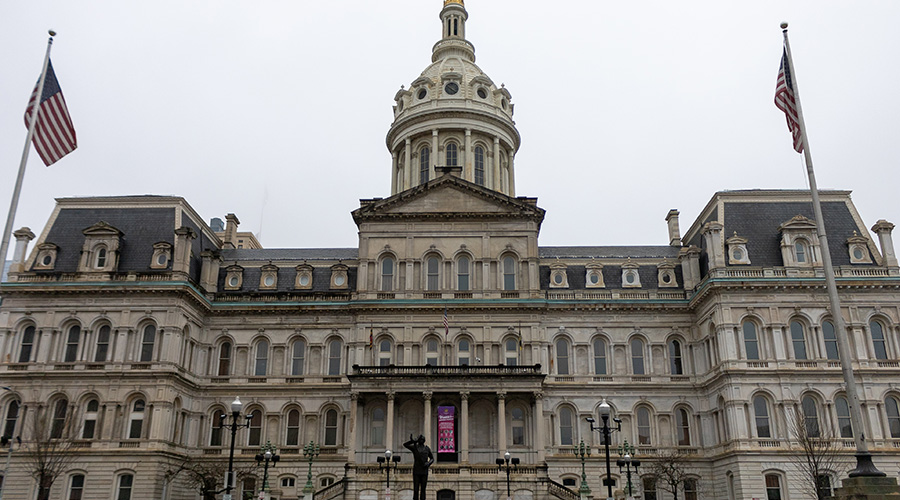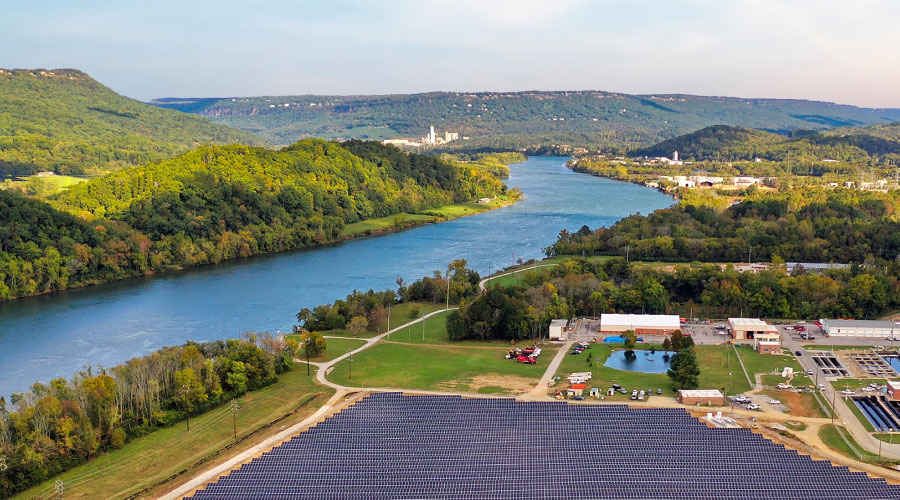 City of Chattanooga
City of ChattanoogaChattanooga Setting Energy, Sustainability Standards for U.S. Cities
Chattanooga emerges as energy savings leader among U.S. cities
The “Dirtiest City in America” is a title no city wants. Chattanooga was dubbed with that moniker in 1969 by none other than Walter Cronkite, the pre-eminent broadcast journalist of his time. When Cronkite said something back then, it resonated.
More than 50 years have passed since that unfortunate title was given to the Tennessee city, and while the city has overcome that moment in its history, it still seems to serve as motivation to current residents and community officials.
“It was a catalyst for the last 50 years and some of the initiatives and improvements that have happened over the years to turn the city around,” says Mark Heinzer, the city’s interim administrator for the wastewater department. “We’re literally 180 degrees from what it was to today, one of the premiere outdoor locations to be at in the country.”
The “Scenic City,” as Chattanooga would rather be known, is now thriving. In December, it was recognized by the U.S. Department of Energy’s (DOE) Better Buildings Initiative for its energy efficiency efforts across its more than 200 municipal facilities covering 2 million square feet. The DOE named Chattanooga as the top local-government performer and third in all categories in the Better Buildings Summit competition.
The city achieved its 2015 goal of reducing energy use by 20 percent in 2019 – five years ahead of schedule. Including the next three-plus years, the city’s energy use dropped by 36 percent.
Energy saving projects, especially at the municipal level, require buy-ins from elected leaders as well as residents dedicated to making their community a better place. Having the support of Chattanooga’s mayoral office is vital, says Erik Schmidt, the city’s director of sustainability.
“Initially it was to be a catalyst for us to do the right thing,” Schmidt says about the city’s commitment to sustainability and energy efficiency. “But so much has changed in just the last eight years — where people work and where people want to live for remote work — along with the younger generation that’s not fooled on climate change. Basically, it’s an expectation, that people are doing something about the climate, and what we’re doing provides a foundation for us to get some real substantial work done.”
Low-hanging fruit
When facility managers target institutional and commercial facilities for energy efficiency, the traditional path to success is addressing the biggest energy consumer.
That was the approach Chattanooga took when it joined the Better Buildings Challenge in 2015. The city focused on the Moccasin Bend Environmental Campus (MBEC), the city’s wastewater treatment plant that was constructed in 1961 and serves six counties and 400,000 residents, as one of its centerpieces for energy-saving projects.
MBEC is the city’s largest energy consumer by a wide margin. The facility treats 140 million gallons of water per day with a peak hydraulic capacity of 230 million gallons per day while producing 70,000 wet tons of biosolids yearly.
“We’re one of the largest energy users in the region and as a city department, we are the largest in the city because we have so many pump stations and motors and everything else at the plant,” Heinzer says. “It was always important for us to look at our energy usage and optimize that. With our involvement with the Better Buildings Initiative, we had a desire to reduce our reliance on the grid.”
Through the projects completed at MBEC, the facility reduced its energy use by 27 percent and water use by 24 percent, resulting in $1.4 million per year in savings. The projects, which were funded through the city’s capital funding account, included the following:
- Solar array: A 10-acre solar array was $5.25 million and is projected to save $400,000 per year on energy costs. The array includes 9,360 solar panels and was completed in October 2020. The 4-megawatt solar array provides about 10 percent of the facility’s energy, Heinzer says.
- Equalization blower: The aeration system is one of the highest energy consumers at the facility and was the costliest project to complete at $20.7 million. The new blowers improve air flow and prevent high volumes of incoming flow from forcing solids and organic material through the treatment system stages.
- Lighting: System retrofits cost $201,150 and are projected to save more than $61,000 yearly. The lighting projects consisted of replacing mostly high-wattage incandescent lamps with LED lights and occupancy sensors throughout the building.
- VFD: The city invested nearly $430,000 in controls for variable frequency drives (VFD), which are used to control sewage through the pumps.
- Water systems: Finally, the city spent nearly $2 million to upgrade the water systems. Projects included upgrading potable and plant water systems by substituting lower-grade water for certain non-potable water process uses and finding and eliminating leaks in the system. The city also upgraded motors and pumps as well as installed an automated pressure control system.
Another MBEC project that Heinzer expects will be completed by the end of the year is an upgrade to a 10-million-gallon wet weather storage tank that will improve plant reliability and flow equalization to reduce sanitary sewer overflows.
“We will be able to sequester that basin into four different quadrants so that we only have to aerate a quarter of it at a time and engage additional quadrants as necessary when the rain and the flooding comes through,” he says. “That’s almost better energy savings than the solar farm. We think we could save about 13 to 14 percent on our energy usage, which is another huge gain.”
To convince elected officials and stewards to spend public funds on energy saving projects, it is important to stress the long-term value of spending tax dollars. Getting the go-ahead to upgrade the water treatment facility was an easier sell considering its value to the community and the facility’s energy hogging demands.
“It’s important to show that it’s a good use of public money, so we really need to show that there’s a good return on this investment that we’re making, whether it’s five years, 10 years or 20 years,” Heinzer says. “When you look at the long-term operation of a wastewater plant and you know these things are going to be in place for a long time, you can calculate the return on investment and present that case. It may not be as fast of a return on investment as a private business would like, but we’re not going anywhere. We can’t shut down.”
Completing the puzzle
When the DOE visited Chattanooga to recognize the city for its energy accomplishments, much of the attention was placed on the MBEC. But with more than 200 buildings under the city’s umbrella, plenty of other projects helped Chattanooga achieve its energy goals.
One significant project took place at the public library, a 108,500 square foot facility that was constructed in 1976. Considered a Showcase Project in the Better Buildings Initiative, the city replaced the library’s 40-year-old HVAC system and completed a lighting project that replaced 800 fluorescent bulbs with about 100 LED lights. The projects realized a 41 percent reduction in energy consumption and more than $60,000 in annual energy savings. LED retrofits also took place in more than 60 other city facilities.
Another signature project was constructing an electric microgrid in cooperation with the local electric utility for a municipal site that houses the police and fire departments, as well as radio communications services used by first responders.
“The microgrid will increase the campus’ energy security and operational resilience in the face of increasing risk of man-made and natural disasters while further reducing energy use intensity and increasing the amount of power supply to the city from non-carbon-based sources,” Chattanooga’s Better Buildings Initiative profile reads. The city expects to see an average annual energy savings of 25 percent and more than $17,000 in annual electricity costs from the microgrid.
Not only do projects like the library and the microgrid attract the attention of the DOE, but they can also make a positive impression on the local taxpayers who choose to make Chattanooga home. Managers like Schmidt and Heinzer are also appreciative of the support of their elected leaders, including current Mayor Tim Kelly, who is driving the bus on these initiatives.
“All of our projects, we look at as, ‘Is this a good use of the public funds? Is it going to pay off in the long run not only financially, but does it have this environmental benefit as well, this double benefit that we’re really looking for here?’ That’s kind of how we gauge our decisions,” Heinzer says.
Dave Lubach is executive editor for the facilities market. He has eight years of experience covering facilities management and maintenance.
Related Topics:










